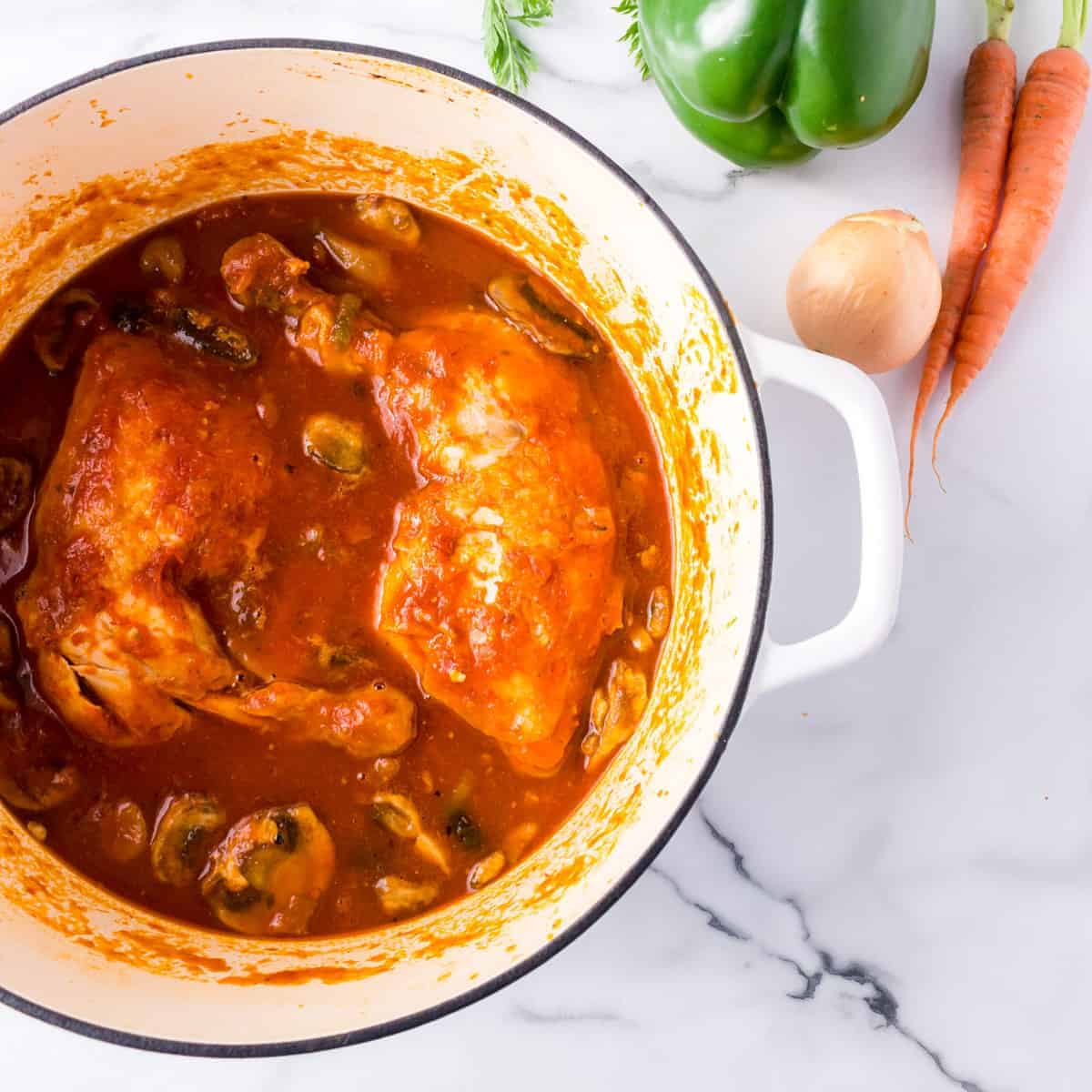Small batch stews are such a great way to serve up a homey memorable meal for one. The great thing about stews is that they are easy to make and taste better the next day, say YES to leftovers! Here are my best tips for making delicious stews. You can play around with any recipe to make it your signature dish. Enjoy the process and the delicious results!

Experiment and learn how to make stews without a recipe and create your own signature stew!
Step back into Mom’s kitchen and try this classic and easy beef stew or a comfort food favorite; chicken and Bisquick dumplings recipe.
- Quality Ingredients: To make a perfect stew, start with high-quality ingredients. Use fresh vegetables and good-quality meat. The flavors in a stew depend on the ingredients, so the better the ingredients, the better the stew will taste. Remember the key elements like a good stock or broth, fresh herbs, and spices for seasoning.
- Slow Cooking: Stews are all about slow, gentle cooking. low and slow makes the meat tender and allows the flavors to meld together for a more flavorful dish. Whether cooking on the stove, in the oven or in a slow cooker, give your stew plenty of time to cook. A low and slow cooking method will help to break down any tough connective tissues in the meat, resulting in a fork-tender stew.
- Balancing Flavors: While it may seem that making stew is just about throwing everything in a pot and letting it simmer, a delicate balance of flavors is involved. You need a combination of savory, sweet, bitter, and acidic elements for a well-rounded flavor. This may include adding things like wine or beer for acidity or a touch of sugar or root vegetables for sweetness. Always taste your stew as it cooks, and adjust the seasonings as needed.
- Layering Flavors: Building depth of flavor is crucial in a stew. One way to achieve this is by layering flavors. Start by sautéing onions, garlic, and other aromatics first before adding the meat and other ingredients. Herbs and spices should also be added at different stages of the cooking process. Some more robust herbs like oregano, bay leaf, rosemary, and thyme herbs are best added early on, while more delicate herbs, like cilantro, should be stirred in toward the end to keep their flavors fresh and vibrant.
- Thickness of the Stew: The texture of your stew is as important as the flavor. You want it to be thick enough like a soup but not overly thick, either. A standard method to thicken stews is using flour or cornstarch. You can make a roux (cooking equal parts butter and flour) at the beginning, or you can coat the pieces of meat in flour before browning them. If your stew is still too thin after cooking, remove some of the liquid, mix it with a slurry of cornstarch and water, then return it to the pot. Conversely, if your stew is too thick, add a bit of stock or water to thin it out.
- Resting the Stew: Like roasts and other large pieces of cooked meat, allowing your stew to rest before serving can enhance its flavor. The rest period allows the flavors to meld together even more, and it can also improve the texture of the meat. If you have the time, consider making your stew a day in advance. Many stews taste better the next day after the flavors have had more time to develop.
Bonus Tip: Browning your Meat: This is often overlooked, but browning your meat before adding it to the stew can make a huge difference in flavor. This process, known as the Maillard reaction, gives your stew a rich, savory flavor.
Do you have any special tips for making stew? Share your tips and leave a comment below.
